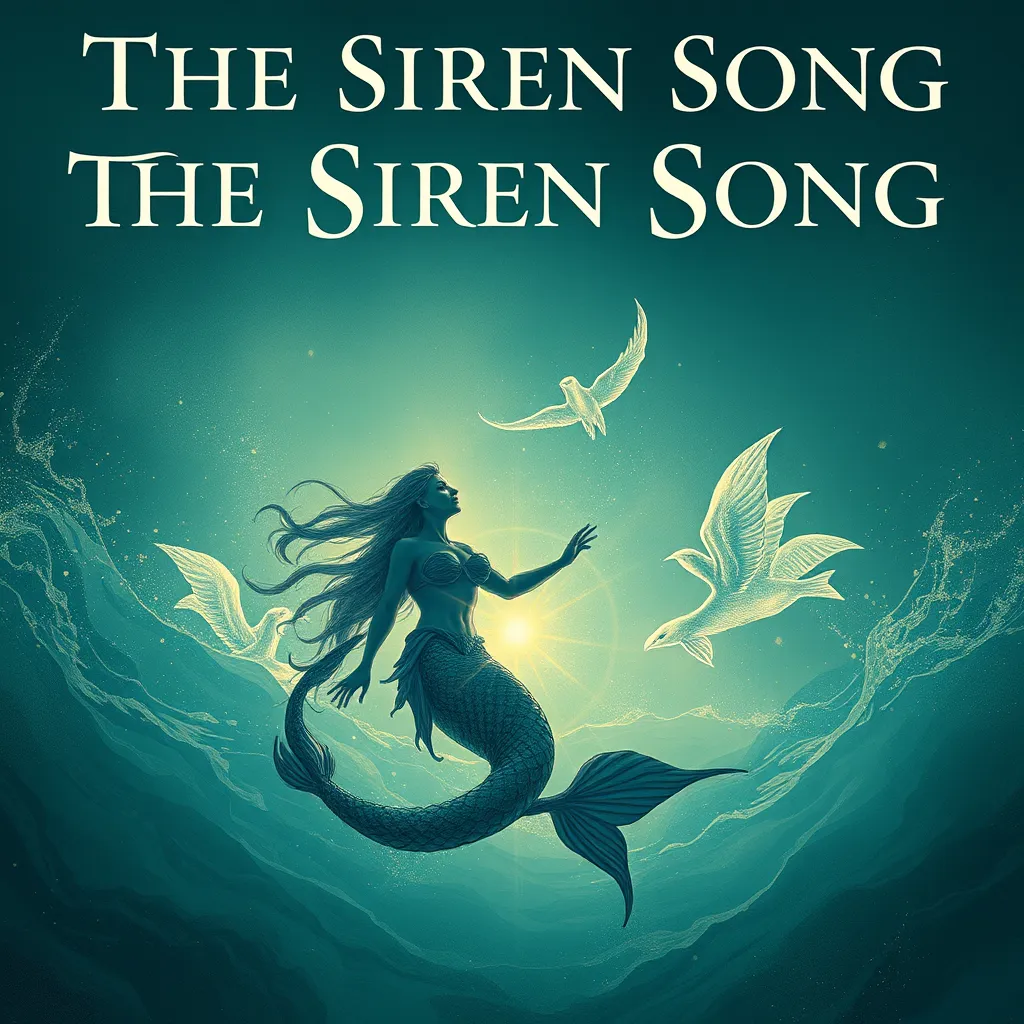The Siren’s Song: Exploring Mermaid Myths Across Cultures
I. Introduction to Mermaid Myths
Mermaids are one of the most enchanting figures in mythology, often depicted as beautiful women with the lower body of a fish. Their allure and mystery have captivated imaginations for centuries. Mermaids are typically characterized by their ethereal beauty, enchanting voices, and association with water, embodying both the allure and dangers of the sea.
Throughout history, mermaid myths have held significant cultural importance, representing various themes such as femininity, seduction, and the unknown. They appear in diverse forms across many cultures, each embodying unique qualities and narratives that reflect the values and fears of the societies that created them.
The purpose of this article is to explore the various interpretations and representations of mermaid myths across different cultures, highlighting their historical origins, cultural significance, and the enduring fascination they hold in modern society.
II. Historical Origins of Mermaid Legends
The origins of mermaid legends can be traced back to ancient civilizations, where they were often seen as omens or symbols of duality. For example:
- Ancient Assyria: The goddess Atargatis, who transformed into a fish, is one of the earliest examples of a mermaid-like figure.
- Babylon: There are tales of fish-women known as “fish goddesses” who were worshipped and revered.
As time progressed, mermaid myths evolved, often influenced by the maritime culture of various regions. Sailors’ tales of beautiful sea maidens who lured men to their doom contributed to the mythos surrounding mermaids. The stories served as cautionary tales about the dangers of the sea and the seductive power of women.
III. The Siren Archetype in Greek Mythology
In Greek mythology, sirens are often conflated with mermaids but are distinct in their representation. The sirens are depicted as creatures who sing enchanting songs to lure sailors to their deaths, as famously illustrated in Homer’s “Odyssey.”
The symbolism of the siren’s song serves various implications:
- It represents the irresistible allure of temptation.
- It highlights the dangers of succumbing to desire and distraction.
When comparing sirens with other mythological creatures, such as the Greek Nereids, who were more benevolent and represented the nurturing aspects of water, it becomes clear that the siren embodies the darker, more dangerous side of femininity.
IV. Mermaids in European Folklore
Throughout Europe, mermaids appear in various folklore traditions, each with distinct characteristics and stories:
- Celtic Mythology: In Celtic tales, mermaids, or “selkies,” are often depicted as seal-like creatures that can shed their skin to become beautiful women.
- Scandinavian Tales: The selkie myth portrays the duality of love and loss, where a selkie’s human partner must reconcile their life with the mermaid’s aquatic nature.
These variations illustrate how mermaid stories reflect cultural values, such as the connection to nature and the sea, and the complexities of human relationships.
V. Mermaid Myths in Non-Western Cultures
Mermaid myths are not confined to Western folklore; they also appear in non-Western cultures, showcasing their universal appeal:
- The Ningyo in Japanese Folklore: The ningyo is a creature that resembles a mermaid, believed to grant immortality to those who consume its flesh.
- The Mami Wata Spirit in African Traditions: Often depicted as a mermaid-like figure, Mami Wata embodies water, beauty, and fertility, representing both nurturing and destructive forces.
- Australian Aboriginal Water Spirits: These spirits are often associated with water bodies and are believed to protect the environment, reflecting similarities to the nurturing aspects of mermaids.
These diverse representations highlight the global fascination with mermaids and their varied significance in cultural narratives.
VI. The Symbolism of Mermaids: Feminine Power and Duality
Mermaids are often viewed as powerful symbols of femininity and sexuality. They encapsulate the duality of seduction and danger:
- Feminine Power: Mermaids represent a form of empowerment, challenging societal norms of femininity.
- Danger and Seduction: The danger they pose serves as a metaphor for the complexities of female sexuality and the societal fears surrounding it.
Modern interpretations of mermaids in feminist discourse have redefined their image, portraying them as symbols of independence and strength rather than mere seductresses.
VII. Mermaids in Modern Culture and Media
The representation of mermaids in contemporary culture has evolved significantly:
- Literature and Film: Mermaids have been featured in various forms of literature and cinema, often depicting them as either tragic figures or empowered heroines.
- Disney’s “The Little Mermaid”: This film has had a profound impact on popular culture, shaping the modern perception of mermaids as whimsical and romantic figures.
- Contemporary Fandom: There is a vibrant community of mermaid enthusiasts, with events such as mermaid festivals and conventions celebrating their mythical allure.
These representations reflect society’s evolving views on femininity and identity, blending traditional folklore with contemporary themes.
VIII. Conclusion: The Enduring Allure of Mermaid Myths
In conclusion, mermaid myths encompass a rich tapestry of narratives that span cultures and centuries. From their ancient origins to their modern interpretations, these mythical beings continue to captivate our imaginations. They serve as symbols of feminine power, temptation, and the mysteries of the sea.
The relevance of mermaid myths in today’s society speaks to our ongoing fascination with identity, nature, and the complexities of human relationships. As we explore their stories and symbolism, we gain insight into the cultural significance of mermaids across the globe, affirming their place in our collective consciousness.
Ultimately, the enduring allure of mermaids reminds us of the power of storytelling and the universal themes that connect us all.



